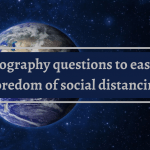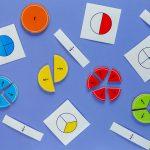The earth’s surface isn’t just a barren, empty space, it’s full of extraordinary scientific discoveries! How much do you know about the earth itself?How Much Do You Know About The Earth’s Surface?
Quiz: What Do You Know About The Earth’s Surface?
Are you curious about the Earth's surface? Do you know what makes up the ground beneath your feet? Test your knowledge with our quiz and see how much you really know about the Earth's surface!
From mountains to oceans, the Earth's surface is a complex and fascinating topic. Our quiz will challenge you to identify different landforms, understand the processes that shape the Earth's surface, and explore the impact of human activity on the environment.
Whether you're a geography buff or just looking to learn something new, our quiz is a fun and engaging way to test your knowledge. So, what are you waiting for? Take the quiz and see how much you really know about the Earth's surface!
With multiple choice questions and a range of difficulty levels, our quiz is suitable for all ages and levels of knowledge. So whether you're a student, a teacher, or just someone who loves to learn, our quiz is the perfect way to explore the fascinating world of the Earth's surface.
So why not give it a try? Take our quiz today and see how much you really know about the Earth's surface!





